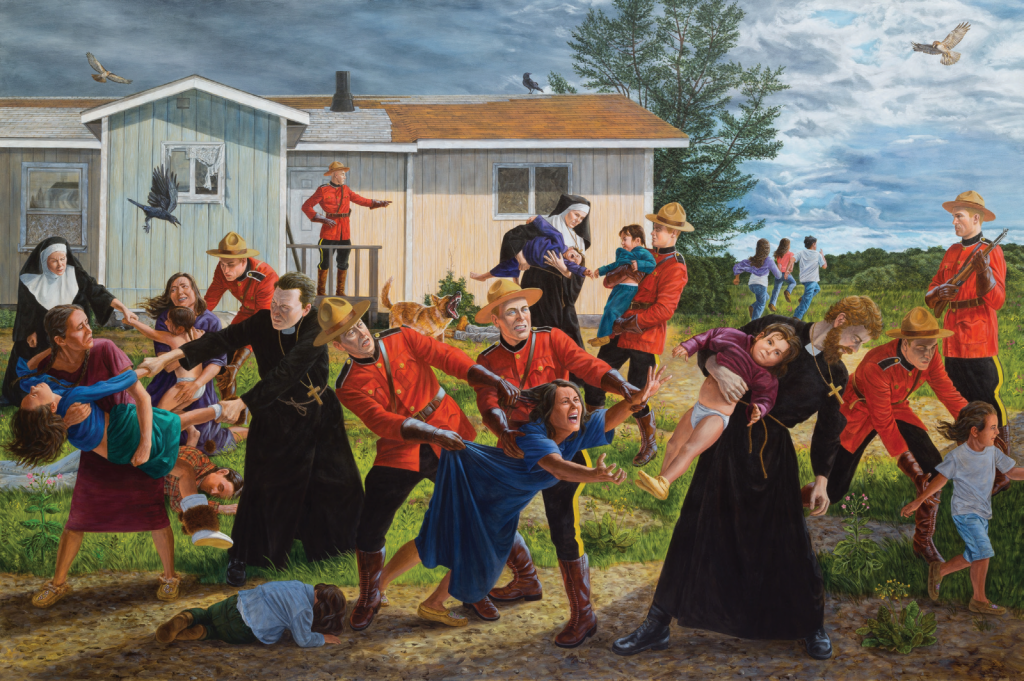
Collection of the Denver Art Museum, Native Arts acquisition fund.
Indigenous art challenges and overthrows colonial expectations. It combats shame. It pushes beyond prejudice, shimmers with resilience, and counteracts art history’s Eurocentric mythology.
First Nations Cree artist and curator, Kent Monkman’s exhibition Shame and Prejudice: A Story of Resilience responds to the Canada 150 celebrations through the subversive lens of his gender-fluid alter ego Miss Chief Eagle Testickle.
Monkman frames the exhibition akin to Jane Austen’s novel Pride and Prejudice through narrator Miss Chief, whose voice guides viewers through didactic panels, and is equally part trickster, part truth-teller. Miss Chief is cocky, coy, and brilliant in her re-telling of Canada’s colonial history. You can’t help but want to have a cocktail with her, kick out Trudeau, and give her the title of Prime Minister.
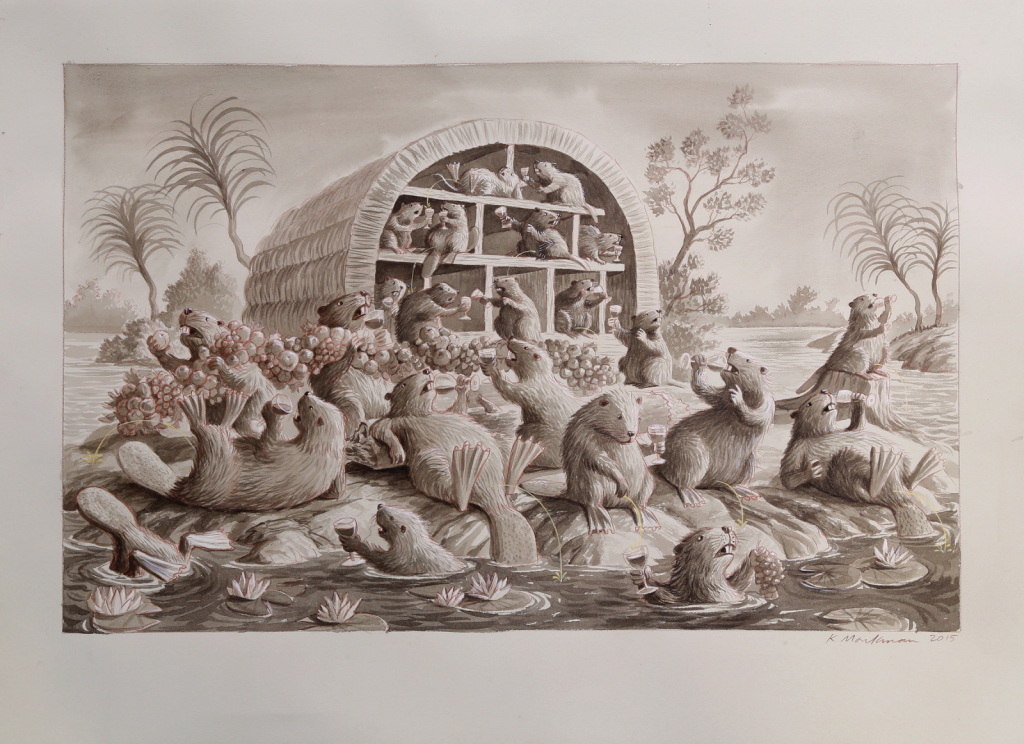
Courtesy of the artist.
In this queer re-mapping of Canadian art via the lens of his drag alter-ego, Monkman, both as curator and artist, critiques and Indigenizes the last 150 years of genocide via Miss Chief, my new favourite badass sassy narrator. Monkman’s masterwork addresses the dark and challenging aspects of Canada’s history.
Through positioning his own paintings, sculptures, and drawings in relationship to artifacts and artworks borrowed from national museums and private collections, Miss Chief time-travels and re-stories Canada’s history, which begins in present day, and circles back to Confederation.
Monkman’s paintings depict images of police and priests taking Indigenous youth from their parents, the signing of the Treaties, the horrifying realities of Residential Schools, and through his fabulous alter ego continuously combats homophobia. Miss Chief subverts the heteronormative/patriarchal gaze as she speaks to two-spirited sexuality, and two-spirited people, a third gender that’s always existed in Indigenous nations.
The touring exhibition Shame and Prejudice: A Story of Resilience asks viewers to acknowledge the experience of Indigenous peoples, and re-frame the fundamental mythology of Canada’s history. Monkman’s art challenges a national narrative, and takes viewers to harrowing places as the work reflects on the effects of colonization in Indigenous communities, and addresses the ongoing effects of intergenerational trauma.
His “Urban Rez,” series looks at how Indigenous women are preyed upon, violated and murdered in a reflection on the epidemic of Missing and Murdered Indigenous Women and Girls through the Cubist female nude. Monkman aims to bring attention to this violence, and depicts the tensions of Indigenous spirituality in an urban environment, and the Christianity that has institutionalized Indigenous people.
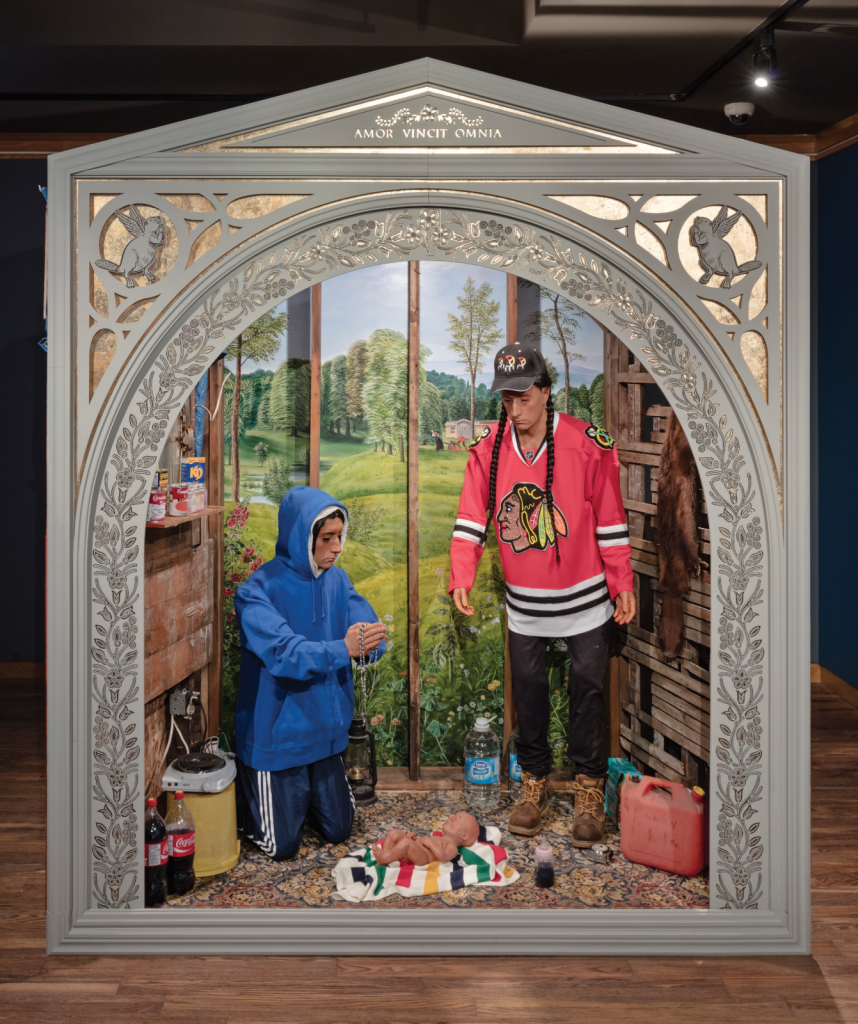
Gift of the Volunteer Committee to Museum London (1956–2017),
in memory of Shelagh Martin-McLaren, 2017.
In the exhibition’s eloquently written and stylized brochure, Monkman’s introduction speaks to how he didn’t see the Indigenous experience of the last nineteenth century represented in the canon. He wondered: could his paintings reach across a hundred-and-fifty years to convey the colonial history of Indigenous people? Through the lens of Miss Chief’s “cunning use of runny mascara,” who artfully embodies the past, present and future, and his own interest in art history, Monkman has developed his own visual language. He confronts “the devastation of colonialism while celebrating the plural sexualities present in pre-contact Indigenous North America.”
Monkman’s mission is to “authorize Indigenous experience in the canon of art history that has heretofore erased us from view.” At the core of his work is an unabashed ability to visually depict trauma—violence, poverty, illness, the `60s scoop, the reserve system, residential schools, and ongoing racism—with heart, honesty, and intellectual zeal.
Yet, he doesn’t leave Indigenous people in the trauma, his work and Miss Chief illustrates a larger arc of survival, and power. He continues to assure viewers, “The fact that Indigenous people continue to survive all of this is a testament to our resiliency and strength.” Miss Chief’s ability to see the past, present, and future dismantles the Euro-centric idealism, and revises the canon.
As animals are central to Indigenous understandings, spirituality, and Traditional Knowledge systems, Monkman uses images of the bear and the beaver as the fur trade’s currency and emblem of colonial Canada. Christianized beavers pray to the heavens on the cover of the exhibition’s bible-esque brochure, making me wish every dodgy motel and hotel room was stocked with his text.
At the heart of his exhibition is the resiliency of Indigenous peoples, and the artist dedicates the exhibition to his grandmother Elizabeth Monkman, who “was shamed into silence in the face of extreme prejudice.”



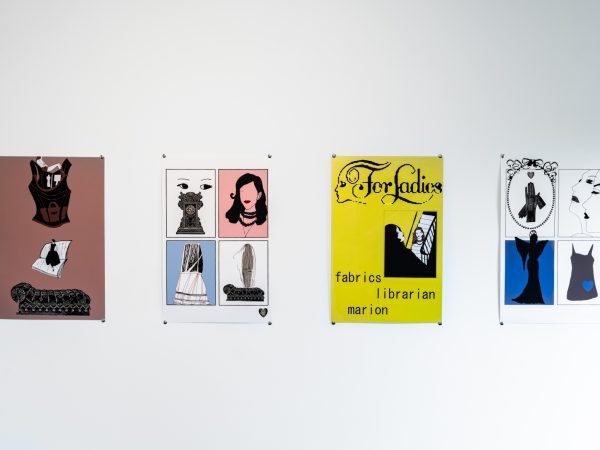
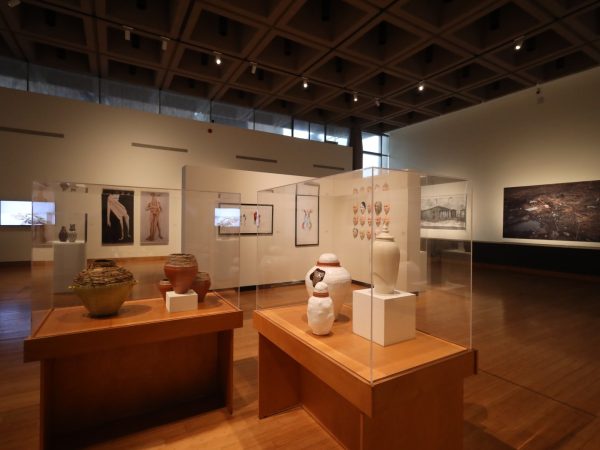











Leave a Reply